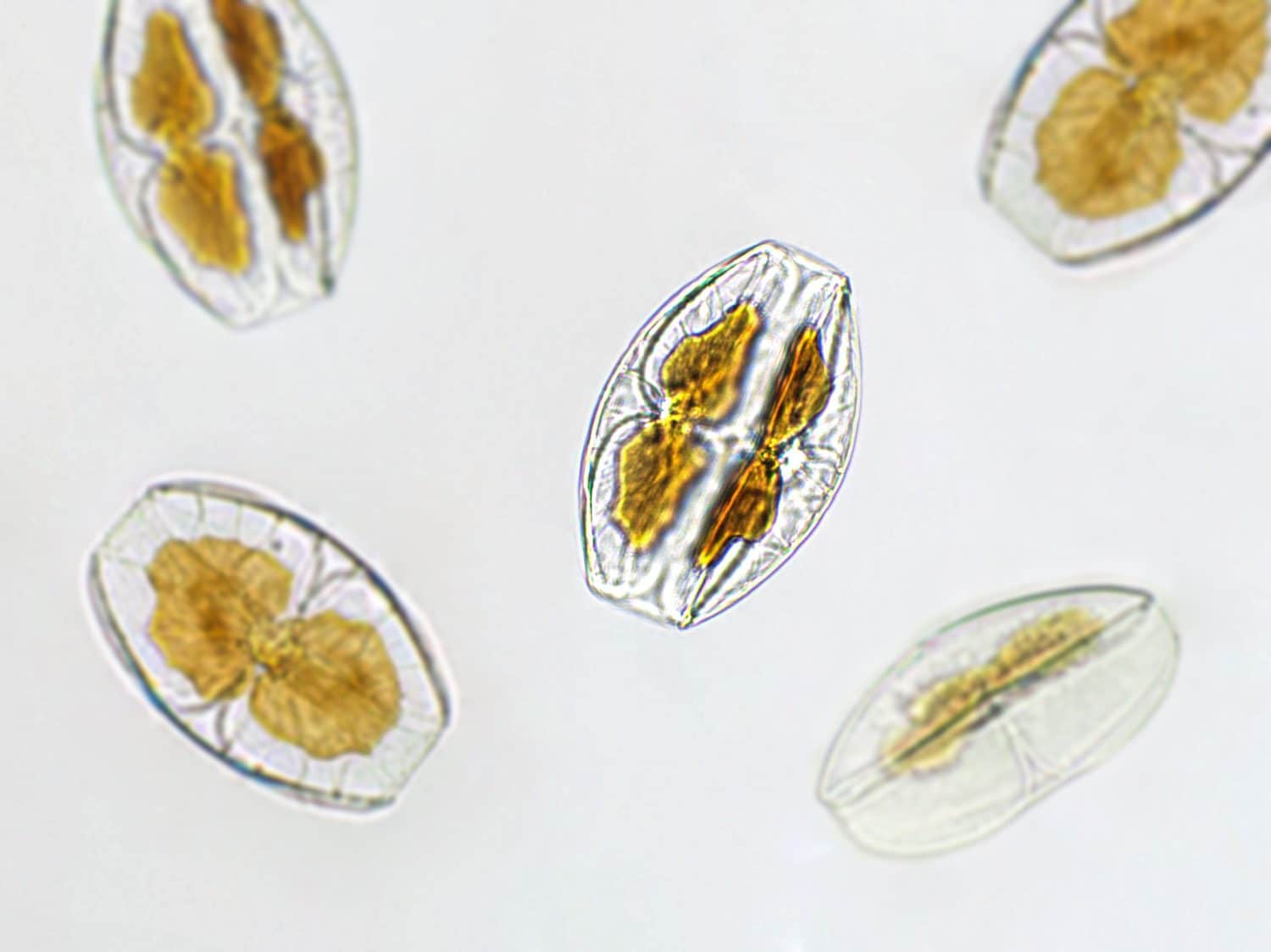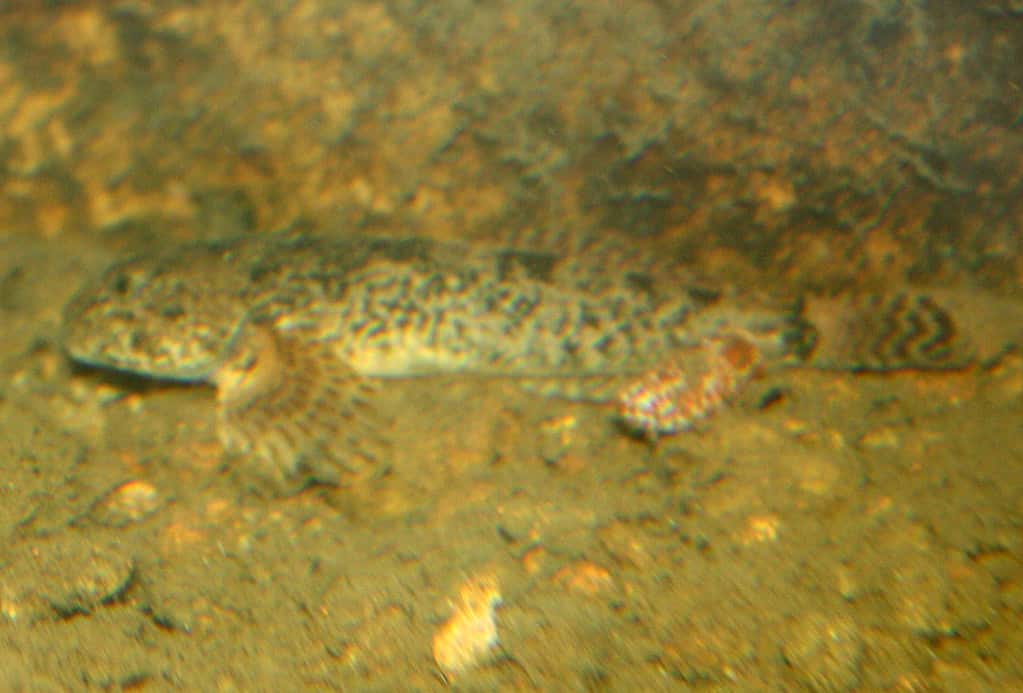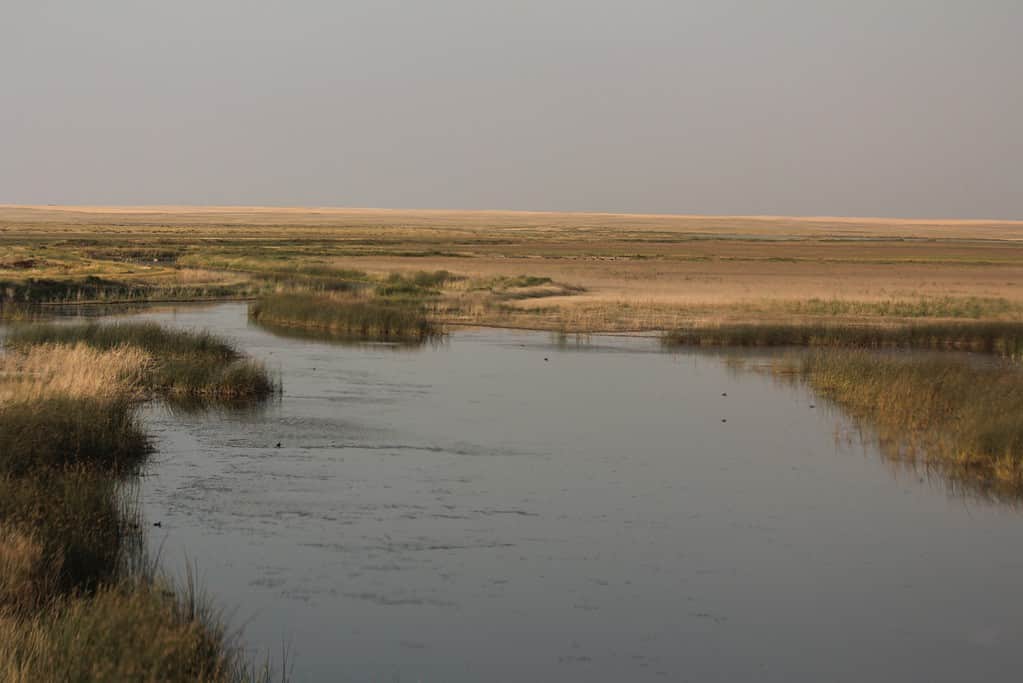
Golden algae don’t often change the color of the water, and the individual alga is impossible to see with the naked eye.
©Elif Bayraktar/Shutterstock.com
One type of algae causing problems around the US is golden algae. It decimates local fish and other aquatic animals, but only on occasion. Most of the time, it lives in relative peace with animals. A lot more research is needed on this group of alga, but scientists still know enough about this alga to know it’s dangerous in the right conditions. If you want to get as much information as you can on golden algae, continue reading below.
What Is Golden Algae?
Golden algae is a broad term. It makes up the class Chrysophyceae and includes 33 genera and 1,200 species of algae. The species that fall under the umbrella term include freshwater and saltwater species. Most of the species are freshwater.
There’s a lot of diversity between the various species. Most, but not all, are single-celled and have two flagella. Many of them also have a statocyst or statospore surrounding them. For the most part, they reproduce asexually.
However, what really characterizes these algae together is the fact that they have a golden-brown color and their food consists of oil drops.
Where Is The Algae Found?
Golden algae is naturally found throughout most of the world. For the most part, it exists in peace with local wildlife and plants. On occasion, though, it causes problems.
It’s a group of algae scientists don’t know much about. It was first documented in the United States in 1985. However, it’s not known whether the species is native to the US and just not found until then, or if it spread to the US for the first time.
It is currently spreading throughout the US. Every year, more and more areas within the country are reporting populations of golden algae. Most studies focus on one species, Prymnesium parvum. This is because this species is the one spreading and causing the most problems.
What Does Golden Algae Look Like?

Water with a lot of golden algae will often look murky.
©{{{1}}} / CC BY 2.0 – License
Golden alga is invisible to the naked eye. Each alga is microscopic, so there’s no chance of seeing them in the water with you. Unlike other algal blooms, the water may not even tell you that something is wrong. Sometimes, the water will turn yellow or copper. This is rare, though, and it’s just as likely there are no visual signs when there are a lot of algae.
The best way to tell if a toxic golden alga is in the water is to watch the fish and other animals with gills. These animals will start to act strange, barely swimming, or sitting just below the surface of the water. In areas where clean water flows into the contaminated water, fish will gather around the source of the clean water.
Fish will also not be worried about humans, and often jump out of the water to try and get away from the toxins. They will also show physical signs such as redness and bleeding in the gills, mouth, and belly. A mucus may also be present around the scales of the fish.
Is Golden Algae Dangerous?
Not all golden algae are dangerous. But unfortunately, some are. Prymnesium parvum is one such toxic species. It’s found all over the world. This species is most often found in oceans and estuaries but can survive in other bodies of water with high mineral content.
This golden algae produces fish toxins, among others. Its toxins cause permanent damage to gills, which prevents them from properly absorbing oxygen through water. Though it’s called a fish toxin, it affects any animal that uses gills, including fish, mollusks, lobsters, and even some plankton.
The algae kills these animals rather quickly. In shallow water, toxic golden algae will decimate the population in a short amount of time. In deeper and bigger bodies of water, there’s a chance for some fish to survive, especially if freshwater flows in from a river or stream.
So far, this alga appears to only harm animals with gills. Other wildlife, domesticated animals, and humans appear to be safe from the alga. Of course, to be safe, it’s best not to eat fish dead or dying from these toxins.
Is Prymnesium parvum Always Dangerous?

Most of the time, there’s no change in the water to show that golden algae is present in abundance.
©Royalbroil, CC BY-SA 3.0 – License
There’s still uncertainty involving when the algae turns toxic. Most of the focus is on Prymnesium parvum, as it is one of the most widespread and toxic of all golden algae noted so far.
From what scientists have observed, bloom density isn’t connected to toxicity. Even if there is a bloom and numerous golden algae are present, the algae aren’t likely to start causing problems. Instead, it appears that certain environmental factors are involved. For example, cooler temperatures and lack of nutrients usually lead to toxic algal blooms.
The times when golden alga is likely to turn toxic is usually around the same time that other algae in the area are facing unfavorable conditions. However, all of this is a rough estimation at best. There are enough exceptions to when these toxic algal blooms occur that it’s not a reliable method.
Slower Food
Some theorize that the algae creates toxins for specific reasons. For example, toxins in the water will slow down other algae that golden algae eat. For bigger animals, when they die and start to break down, they will release organic matter that it also eats.
It may also be a form of protection. The toxins may keep away certain zooplankton that eat golden algae. It also kills off other algae species that may try and compete with Prymnesium parvum for resources.
Whether it’s a direct effect or a side effect, producing toxins allows certain species to outcompete other animals and organisms.
The photo featured at the top of this post is © Rattiya Thongdumhyu/Shutterstock.com
Thank you for reading! Have some feedback for us? Contact the AZ Animals editorial team.







